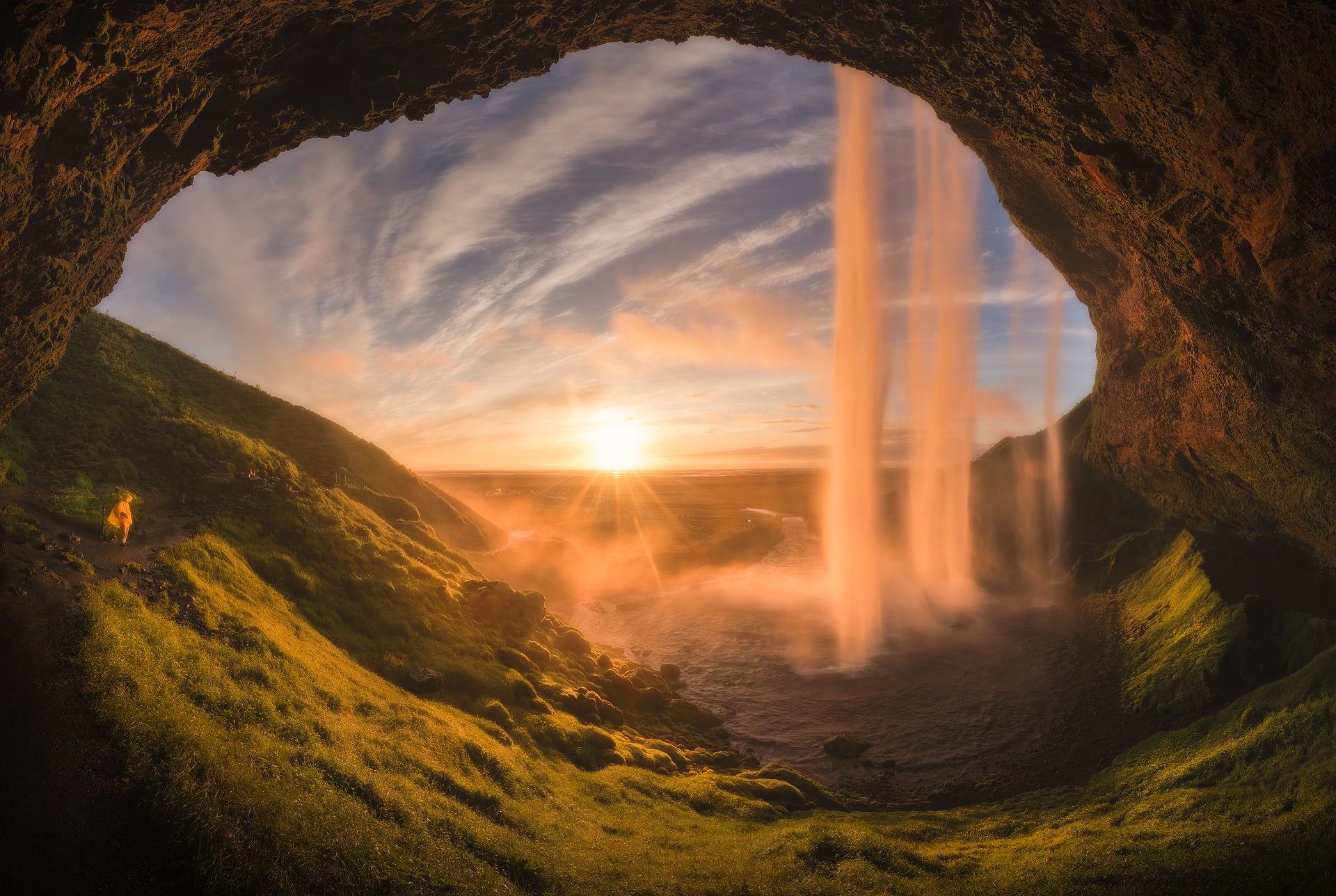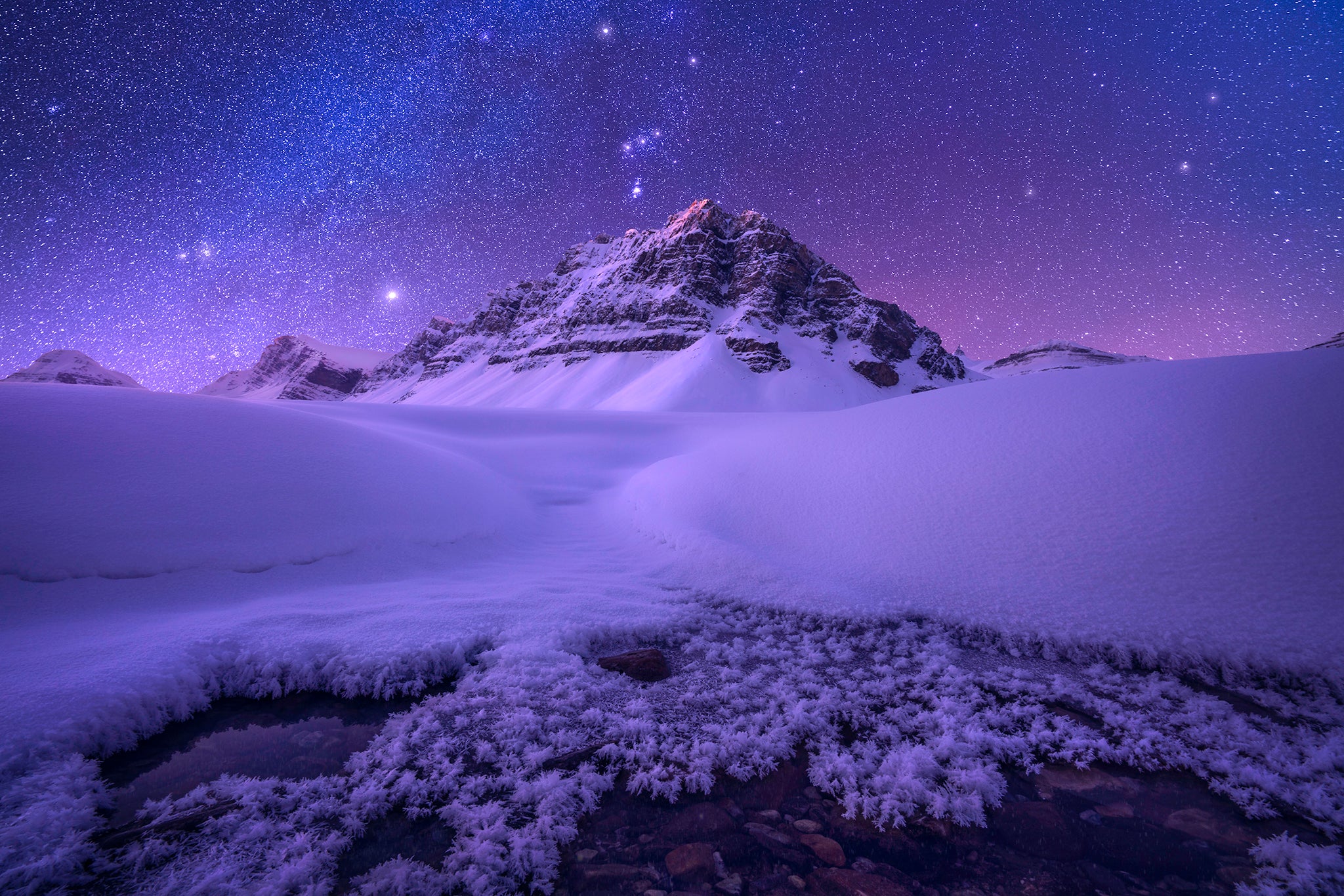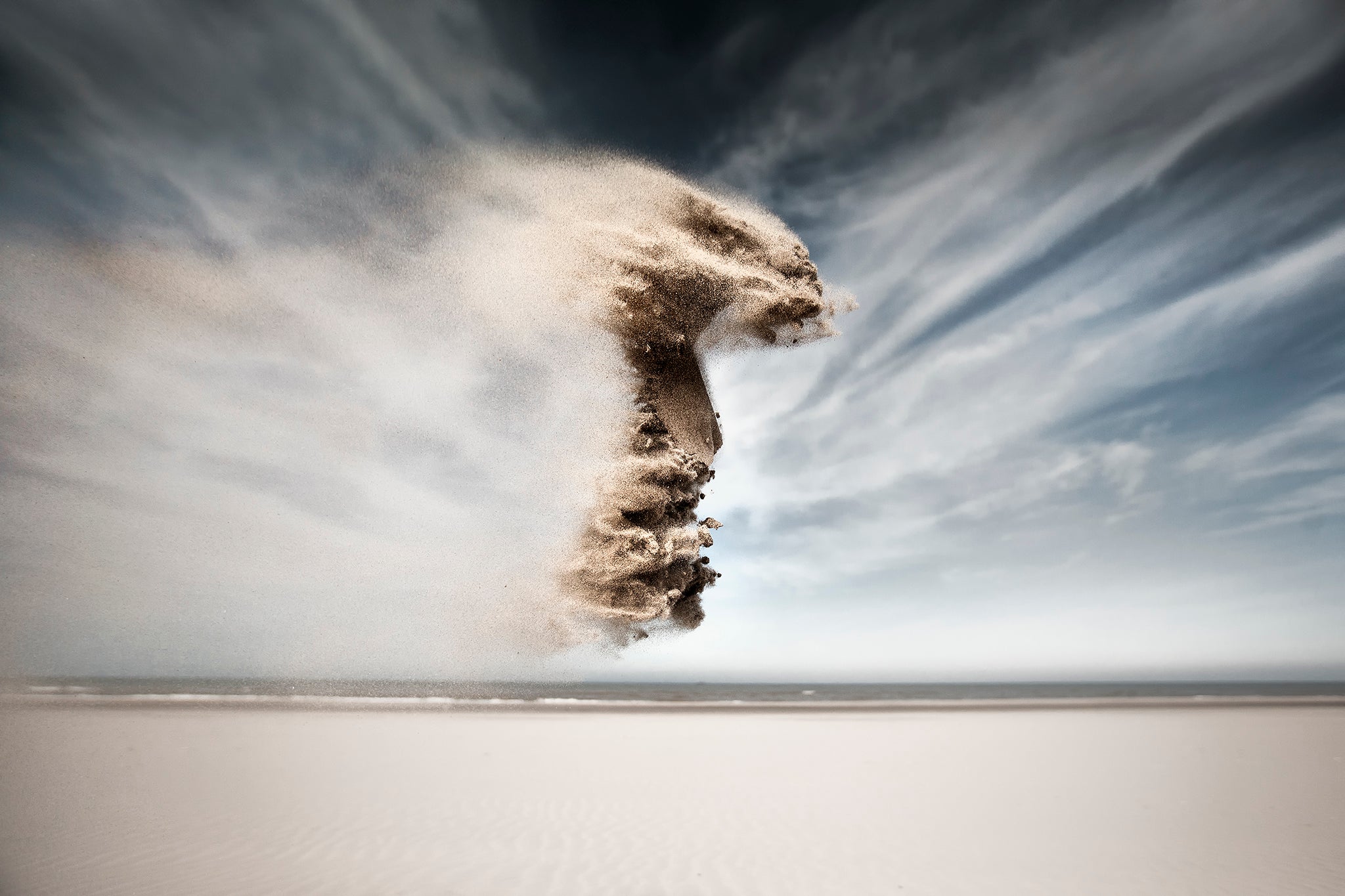
To photograph wildlife, one must have a deep respect for nature and the environment. For wildlife photographer, Aarzoo Khurana, it manifests as an important part of her own passion to capture the behaviours of animals out in the wilderness.
- Check out these South America Photo Tours and Workshops
- Find out How to Use Balance for Better Compositions in Photography
- Discover How to Take Sharp Landscape Photos in Windy Conditions
Aarzoo's incredible talents are demonstrated in a portfolio of stunning images that have been photographed in around her home country of India. Aside from documenting awe-inspiring moments, her masterful use of light and shadow bring alive the subjects of her shots.
This week, we had the honour of chatting with Aarzoo about her work, including the art of storytelling with pictures, the benefits of photographing wildlife in order to understand their lives and needs, as well as her advice for photographers hoping to get into the field of wildlife photography.
 Aarzoo Khurana is a wildlife photographer based in India. Photo by: 'Aarzoo Khurana'.
Aarzoo Khurana is a wildlife photographer based in India. Photo by: 'Aarzoo Khurana'.
- See also: Interview with Riddhi Mukherjee
Hello Aarzoo, thank you for joining us today. First of all, could you please tell us a little bit about yourself and your photographic journey? Where did your love for nature come from? How did you become interested in photography?
Fascinated by the camera, as I turned 10, I began pestering my father to buy me one. He finally gave in and got me the fascinating toy I had been asking for. The film camera gave way to a digital point-and-shoot, which, as time went by, was updated to a DSLR.
I began with street photography because that was the most natural place to turn the lens onto. Also, streets are always interesting and dynamic. But once I was amid the wild, my camera found home. It was on a wildlife leisure trip when I looked at the wildlife through the lens of a camera and it was a breathtaking visual, incomparable to anything I had shot before. Ever since, wildlife has been my preferred subject for photography.
 Aarzoo's fascination with animals began at a young age. Photo by: 'Aarzoo Khurana'.
Aarzoo's fascination with animals began at a young age. Photo by: 'Aarzoo Khurana'.
But in retrospect, I feel that my fascination with animals did not begin in the wild. I used to capture domestic cats a lot for despite domestication, the wild continues to persist in them, unlike in most other domesticated animals, including dogs.
Apart from cats, I shot eagles in flight – a fascinating sight to behold. And then the baby monkeys – the cute, curious and remarkably articulate creatures in their own little-monkey ways. Those were the three best subjects that I could easily find around my place.
For low light photography, I toyed with smoke. I can’t quite look back and put my finger at the precise moment when I realised that it was wildlife photography that I wanted to do principally but I think I graduated from urban non-human creatures to the wild ones, and it was more of a continuation than a switch. Once I got going with wildlife photography, I had no reason to stop.
I can only say whenever I am close to nature and behind a camera, I feel very strongly that it's where I want to be – surrounded by nature and behind the camera recording the wild one frame at a time.
What fascinates you the most about wildlife photography?
Wildlife and photography are two different kinds of magic. Combine the two and you have an exquisite sorcery on your hands, of which you are, at least in part, a maker. What possibly could be more satisfying and humbling?
The very fact that one can capture a moment not available to naked eyes is by itself magical. Besides, wildlife is absolutely unpredictable. Every moment in the wild is unique in itself, and you get the opportunity to freeze it and record it forever.
- See also: Namibia Wildlife Photography Tour
Do you have a particular subject which you like to photograph?
The young ones of all the animals, especially langurs and deers, are my favourite subjects. The babies are most curious, and extremely adorable in their unique bumbling ways, peeping out, tumbling over, unmindful of all the dangers around.
 Special moments like this are captured with Aarzoo's keen eye. Photo by: 'Aarzoo Khurana'.
Special moments like this are captured with Aarzoo's keen eye. Photo by: 'Aarzoo Khurana'.
How do you use your photography to tell the story of a certain species, their habitat or the environment as a whole? What is it that you try to capture and what do you hope people will take away from your images?
I am a big fan of photographic story-telling, and try to capture the wild in its most natural settings because it’s their story for us to tell. We cannot impose our fiction on them.
I think wildlife photographers bring the insides of the woods to the outside world. People these days hardly have the time to appreciate nature, for life these days is more about work and social networking, and increasingly less about leisure, and even lesser about spending time in natural settings. So it’s not a bad idea to bring the wild into the living rooms through the lens of a camera.
 Aarzoo tries to bring out the beautiful moments of each animal's behaviour. Photo by: 'Aarzoo Khurana'.
Aarzoo tries to bring out the beautiful moments of each animal's behaviour. Photo by: 'Aarzoo Khurana'.
I try to bring out the most beautiful moments one can witness inside the jungle to make my viewers take in the beauty of nature, which might also make them more alive to the protection of the environment – a cause we cannot afford to ignore; not any longer, if we ever could.
Photographing wildlife can take a lot of patience. Do you work with experts in tracking to ensure that you’ll be at the right place during the right time to witness particular behaviours? How much planning do you need to do in advance of a shoot?
Certainly. In the wild, one is always accompanied by a naturalist, who has a thorough understanding of the flora and fauna, and knows the jungle well. So it is a big help to have someone like that in the wild. Also, in India, you need to get a permit to enter the jungle and the vehicles that are allowed inside are limited. So we have to plan our trips about 4-5 months in advance.
 Moments like these are carefully captured with the help of a naturalist to lead the way. Photo by: 'Aarzoo Khurana'.
Moments like these are carefully captured with the help of a naturalist to lead the way. Photo by: 'Aarzoo Khurana'.
Your images give us a glimpse into the secret lives of animals, with a certain quiet drama exuded in your ability to master shadow and light. Can you share with us a bit about how you came to develop your style in photography? What sorts of techniques do you use to convey atmosphere and mood?
Not “secret lives” really, for neither the animals seek to keep their lives secret, nor are their lives hidden from view as long as you know where to look. But they do want to remain undisturbed in their lives, like everybody else, including us humans, and we must respect that. What I try to do is catch a glimpse of their lives in their natural setting and record it on camera without disturbing them for a closer and better understanding of their lives and needs. They have their ways, like we do, and their ways are not any less sophisticated than ours. They are just different because our needs – and also desires and motivations – are not exactly the same as theirs. Interestingly, they do have a sense of privacy; and while their idea of privacy may be different from ours, it's certainly there.
 as humans, we must respect the wildlife that we photograph. Photo by: 'Aarzoo Khurana'.
as humans, we must respect the wildlife that we photograph. Photo by: 'Aarzoo Khurana'.
My style of photography is, therefore, governed by the principle of capturing the lives of the animals in their natural habitat without intruding upon them. Some intrusion is inevitable, but I try to keep it minimal. Capturing their lives on camera is important, but their lives – as they live it, undisturbed – are infinitely more important. That’s the principle that shapes my style of photography.
Therefore, keeping the animal and its habitat central to my images is the basic technique I use. Of course, the finer aspects of it vary from picture to picture.
- See also: The Best Lenses for Wildlife Photography
How has your photography style evolved over your career?
In the beginning, it was only about taking good pictures, and then better pictures, and then technically sound pictures. Of late, I have been concentrating not only on clicking good pictures, but also on such pictures that display the animals in their environment to show not only how awe-inspiring nature is, but also how symbiotic the relationship between animals and their environment really is.
 Aarzoo uses her work to demonstrate the relationship between an animal and its environment. Photo by: 'Aarzoo Khurana'.
Aarzoo uses her work to demonstrate the relationship between an animal and its environment. Photo by: 'Aarzoo Khurana'.
Tell us about one of your most challenging assignments. How did you work through the challenges to fulfil the brief?
Since I do not take external assignments at the moment, I have never really had to deal with the challenge of having to fulfil someone else’s requirements. But on each trip to the wild, the “assignment” is to bring back the wonder of the wild in all its splendour. And the key to it is patience and attention to detail. One cannot stay too far away, and cannot really go too close to disturb the animals or to expose oneself to needless risks; and what is the right distance is a challenging question a wildlife photographer has to deal with every single time he or she clicks a picture.
What is one of the most inspiring encounters that you’ve had whilst travelling or shooting in-field?
A couple of years back, in 2018, we were on a full-day safari in Ranthambore National Park, Rajasthan, India, which is home to a large number of big cats, including tigers. During the days, tigers get sluggish and tend to spend their time lying around, and it was no different for Noorie, a sub-adult tigress back then, who had been lying right in front of us at a safe distance by a lake for quite some time. She was slumbering and we have kept our cameras aside because there was nothing to capture.
 Some encounters can stand out more than others. Photo by: 'Aarzoo Khurana'.
Some encounters can stand out more than others. Photo by: 'Aarzoo Khurana'.
None of us photographers realised that there had been a movement until we heard a splash. We looked in the direction of the sound and found a Sambar deer emerging from the water, rushing towards us with Noorie after him. They were a mere six feet from us when the mighty tigress swung a claw at the deer and tore through its stomach. Finding our vehicle in the way, the deer had steered away at an angle and so had the tigress as she clawed it. We saw the bare claw cutting through the air and getting bigger as it closed in on us before landing on the deer. We felt the air moved by the dash of the animals hit our bodies as they rushed past us. It was a terrifying moment; we were in the middle of a tiger’s hunt. The predatory stealth, quickness and strength of the tiger were in full display in the brief moment, and we were left staring in awe.
The impact of location-specific tourism upon nature, wildlife, culture and the environment is a discussion that often accompanies photography on social media these days. What are your thoughts on this?
We need to understand that human activity, including photography, should not disturb animals living in their natural habitat. It not only disturbs their relationship with nature, but can also be catastrophic for the climate because behavioural changes in animals can bring about unforeseeable cascading environmental changes, which are detrimental to the ecological balance on the planet. The wild, therefore, should not be interfered with in any way that might leave a permanent impact on it.
Do you run any educational photo workshops or seminars for aspiring photographers who are hoping to get into wildlife photography?
Yes, I do love teaching photography as well. For aspiring photographers, I have in-field courses and workshops, wherein they get an in-field guidance about the technical aspects of photography, after which there is a detailed mentor session on various aspects of photography, including post processing. I also conduct online courses and webinars for the people who aspire to learn but are not able to join the field workshops for some reason.
 Aarzoo also spends her time teaching others the finer points of wildlife photography. Photo by: 'Aarzoo Khurana'.
Aarzoo also spends her time teaching others the finer points of wildlife photography. Photo by: 'Aarzoo Khurana'.
- See also: Costa Rica Photo Tours and Workshops
What is your advice for photographers on how they can respect nature when they are out shooting in-field?
It is important to understand that we are the aliens in the wild, for it’s someone else’s home and we are the intruding foreigners. Stalking or following an animal is an absolute no. Baiting, playing calls or doing anything else to attract the attention of an animal must be refrained from because it can really stress the animals and birds leading to unforeseen consequences.
I request all those who are reading this to maintain the peace of the jungle, and not take the plastic and other synthetic objects into the wild. Also, follow the basic rules such as wearing jungle friendly clothes, not eating in the park, keeping the mobile phones on silent while you are in the jungle.
With so many technological advances these days, where do you see wildlife photography heading in the future? How can people continue to capture interesting images that tell a story in a unique way?
To tell the story of an animal, one has to know the animal. So one has to put in a lot of work before one comes within the shooting distance of the animal concerned. Knowing the general behaviour of an animal or a bird goes a long way in predicting its next move with reasonable accuracy, which can not only enable one to capture a good image, but can also save one’s life, if the animal or the bird is capable of inflicting serious damage, which many are.
Technology assists us a great deal in the background research as well. For instance, one could use YouTube to memorise bird calls to identify different birds by the sounds they make.
 Technology is a great way to stay connected with other wildlife photographers. Photo by: 'Aarzoo Khurana'.
Technology is a great way to stay connected with other wildlife photographers. Photo by: 'Aarzoo Khurana'.
Besides, technology helps us stay connected with other photographers the world over, which gives one a fair idea of how things are being done internationally. It helps one pick what one can do best, and create a niche for oneself. Used with skill, technology can be very helpful, and can also expose one to the places one has not been to and give one new creative ideas. A person sitting in Miami can see how the Royal Bengal Tiger looks yawning amidst the golden rays of the sun in a forest in Karnataka.
- See also: Africa Photo Safaris and Workshops
Have you got any special projects planned this year? How do you see your own photography evolving in the future?
Honestly, this year doesn’t look right for plans. So the only projects planned so far are webinars and things that I can do online. Things are a little too fluid at the moment to make any concrete plans.
 It is important to respect the environment in which we work. Photo by: 'Aarzoo Khurana'.
It is important to respect the environment in which we work. Photo by: 'Aarzoo Khurana'.
- See also: Mongolia Photo Workshops
Thank you for sharing your thoughts with us today! Do you have any final words of advice for our readers?
I think I have already said quite a lot. For parting words, I can only repeat what I have said above to lay as much emphasis as I possibly can: respect the environment and do as much as you can to preserve, protect and sustain wildlife; our existence, as well as the existence of future generations, depends upon. Climate change presents a clear and undeniable danger. We cannot afford to be complacent.
For more information on Aarzoo Khurana's work, you can visit her website or find her on Facebook, Twitter and Instagram.
Follow in Aarzoo's footsteps as a wildlife photographer! Check out our range of international photo tours and photography workshops.












